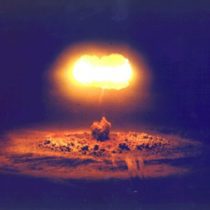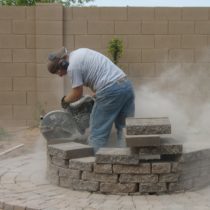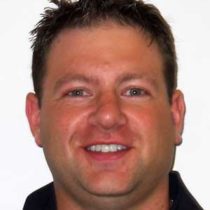Landscape Architecture for Landscape Architects › Forums › DETAILS & MATERIALS › Cooling Synthetic Turf?
- This topic has 1 reply, 9 voices, and was last updated 14 years ago by
Doug Prouty.
-
AuthorPosts
-
April 28, 2009 at 3:25 am #174347
Anonymous
InactiveI recently emailed a link to an article discussing an automatic cooling system (irrigation) for a synthetic turf field to a few of my clients. I was surprised by the passionate responses I received back both for and against cooling systems for synthetic turf. I would really like to hear other opinions on the subject. So is a cooling system for a synthetic field effective and is it worth the additional expense?
April 28, 2009 at 5:13 am #174363Doug Prouty
ParticipantMarc,
If you’re planning on having people on a synthetic lawn for a period of time, an irrigation system is a must to cool the space off. I’ve had syn. turf suppliers tell me that the ambient temperature can increase between 2-16 degrees with syn. turf. for a height of 4 feet above grade.
If you are designing a sports field, an irrigation system is again a must as the players will become exhausted due to the increased heat. Some friends of mine designed a multi soccer pitch complex with syn. turf and the facility had to water the fields down before play could start. This didn’t sit well with the general public as syn. turf is supposed to save water. What the public didn’t understand is that the facility didn’t apply water after the games and during the week but only before the next weekend round of play
If the space that you’re desiging is small enough, a quick coupler key and a rolled up hose may work to quickly cool the space off before an event, especially in a condominium type setting. This system also works well if the homeowners have pets as they can wash off the grass where the dog uriniated or messed on to help reduce the bacteria build up caused by the excrement.
I hope this long winded summary helps!
April 28, 2009 at 1:55 pm #174362Anonymous
InactiveAny personal experience with the increase in humidity after watering an athletic field? In my area I have run into two schools of thought.
1. It is necessary to avoid injury.
2. It is not worth the expense because it makes the area so humid that if feels warmer.April 28, 2009 at 1:57 pm #174361 Chad CrutcherParticipant
Chad CrutcherParticipantGentlemen,
A short reply. For those who find it hard to wrap their mind around the concept, consider this: in hot climates it is often necessary to irrigate natural turf during the heat of the day; not so much for user comfort, but for the health of the turf. Soil temperatures can soar, drying the turf and baking the soil hard as concrete.Chad
Do well doing good.April 28, 2009 at 4:44 pm #174360 Clayton MunsonParticipant
Clayton MunsonParticipantMy company will often place some rotors around the perimeter of the turf area that can be manually turned on to cool down the area before use.
I do not have experience with playing any sports on it. As far as humidity being a concern here in AZ it tends to dissipate pretty quick, and any that does hang around is usually a blessing to athletes.
May 1, 2009 at 9:21 pm #174359 Adam MormanParticipant
Adam MormanParticipantI have an alternative solution product that you should consider for Artificial Turf fields to cool them down. The product is called EPIC Chamber by a company out of Minnesota called RESI Solutions. Here’s the link to their site and this product: http://www.rehbeinsolutions.com/technology/epic.html
Here’s some info from the manufacturer on the product and all the uses for it beyond cooling artificial surfaces:
• Provide Stormwater Quality/Quantity Management: RESI solutions enable any green space or permeable surface to incorporate sub-surface cleansing and storage of massive stormwater volumes in the soil profile. Effective utilization of the EPIC System™ can provide stormwater management for quality and quantity purposes.• Reclaim Rainwater for Irrigation Purposes: The EPIC System™ provides an opportunity to store and re-use water to irrigate any living green spaces.
• Surface Cooling of Athletic Fields: Research has shown that EPIC Systems™ can reduce the field surface temperature (by 25-30 degrees) during hot months and improve overall player comfort (especially important in warm climates).
• 50-85% Reduction of Water Consumption for Irrigation: In irrigation applications, EPIC Systems™ use 50-85% less water than traditional spray irrigation systems (University of New Mexico Study). EPIC System™ water delivery occurs through sub- surface, passive capillary action within the sand-based profile.
• Water Management: Living systems of vegetation and microorganisms cleanse and reuse water through physical uptake and biological breakdown of pollutants. Water treatment of our natural components removes over 80% of Total Suspended Solids (TSS), 85% of Total Phosphorous and over 60% of Nitrates (Rice Creek Watershed District research). Netlon ATS mimics an intense root structure that doubles the infiltration rate of soils. All runoff can be controlled and re-used by properly utilizing the EPIC System™.
• Improve Vegetative Durability and Reduce Soil Compaction/Erosion: Netlon Reflex Mesh elements give the turf surface “memory”, allowing it to spring back into shape following heavy or repetitive use. Areas reinforced with Netlon Reflex Mesh are resistant to ripping and can support heavy vehicle traffic without developing ruts.
• Re-Use Greywater and/or Stormwater: EPIC Systems™ deliver water through passive subsurface chambers; this mitigates health concerns associated with greywater or stormwater re-use.
• Decreased Maintenance Costs: The EPIC System™ and Netlon Reflex Mesh elements reduce long-term operating and maintenance expenses. Our solutions also significantly reduce water consumption and decrease the cost of stormwater infrastructure.
• Improve Vegetation Health and Vitality: With sub-surface irrigation, vegetation establishes more rapidly and decreases the water-related stress. Studies that have been conducted with turf grass and EPIC Systems™ indicate there is an increase in the grass blade mass and density by as much has 40% (by weight). Also, EPIC Systems™ allow for subsurface fertilization if needed for specific vegetative needs.
• Contribute to LEED Credits: LEED credits that are attainable include: Sustainable Sites, Water Efficiency, Innovation in Design, Recycled Content and Materials Reuse.
• Proven Return on Investment (ROI): Incorporating the EPIC System™ and Netlon ATS into your project will provide multi-functional green spaces that have a proven ROI. Our solutions provide several benefits and enhance the function and aesthetics of the project.
Contact me with any questions
May 1, 2009 at 10:47 pm #174358Anonymous
InactiveInteresting system and solution. I see you are located in Hagerstown, which is only a few hours from me. Any local sites utilizing this set-up?
May 2, 2009 at 5:05 am #174357Doug Prouty
ParticipantMarc,
I see that you’re in PA while I’m in AZ. Humidity isn’t an issue here as much so I don’t have any experinece with humidity after the water is applied. Most art. turf material will have drain holes so that there isn’t any standing water and the turf is installed over a compacted subgrade of 1/4″ minus decomposed granite which should wick the water away from the surface. Your installation process may be different from ours since you have freeze/ thaw issues.
Injury wise the parks may water the turf down to avoid ‘rug burn’ but it may be a toss up is he water dries fast. I’m not sure what the slip factor is either. My experience with art. turf has been on apartments and residential so I’ve only heard issues from friends in regards to sports fields.
May 2, 2009 at 12:42 pm #174356 Adam MormanParticipant
Adam MormanParticipantI just started working with the product within the past month. We’re working hard to get some projects to use it. City of Philadelphia is trying to get legislation passed to make it necessary to install the system in all 275 current and all future play fields, as they’re built or renovated.
We should have many projects using this system in the coming months. As we can meet with LA’s, Civil’s, Architects, and local/state/federal agencies, the system will be specified in many projects during the design.
Anyone designing a playing field for a school or public entity should definitely consider this product. I’d be glad to set up a presentation at anyone’s office within a couple hours of DC.
May 4, 2009 at 2:11 pm #174355 troy SquiresParticipant
troy SquiresParticipantI would be interested in getting information on this as we sell artificial turf fields (did about 60 last year) mostly in the southwest where heat on turf is a growing issue.
troy squires
Hellas Construction
512-250-2910
tsquires@hellasconstruction.comMay 4, 2009 at 2:20 pm #174354 troy SquiresParticipant
troy SquiresParticipantMost of your points are correct except I take issue with the statement that temperatures are elevated on turf 4′ above the surface. Tests by the engineering firm Milone and MacBroom in CT showed that while the temperature on the surface itself was elevated vs. ambient temperature by 15-25 degrees, it was only 1-2 degrees hotter at 5′. (I can send this study to you by email if you want it). This height of course is what sports medicine experts consider in terms of player safety, not the surface temperature. From this standpoint, most experienced trainers with turf fields do not see a health safety issue. Moreover, the temperature-humidity index on turf at this height is often equivalent to that on grass simply because the humidity at this level on a grass field is generally higher.
However, the surface of the turf IS hotter so this is not an issue that should not be addressed. A “spritz” of water before practice will reduce the heat of the surface by about 20 degrees immediately, so an irrigation system of some kind is great, although many, many (in fact, most) fields in the southwest do not have these systems and manage well. For an extra $40K, however, the cost to install the system is minimal on an $800,000 project. Very little water will be used because most of the time the surface will not be used when it is hot enough to water it and most of the year the irrigation will not be necessary. And again, little actual water needs to be put on the field–it is not like watering a grass field where the roots need to be watered.
December 23, 2010 at 4:56 pm #174353 sportsfieldfanaticParticipant
sportsfieldfanaticParticipantHey Marc, not sure if you are still active in this thread or not but thought I would share. There are a few companies that are extremely beneficial in their knowledge of sports field conditioning. From the field construction aspect, Sports Fields, Inc. aka “Fields” has done more heated sports field than anyone I know. Not only that, but their fields are awesome. They are the preferred contractor for the Green Bay Packers as well as many others. If you are looking for more information on sports field heating or cooling for natural grass or synthetic turf fields, try http://www.radiantso.com These guys have been cleverly hidden behind some of the best designed fields for heating and cooling. They have done some of the work for FIELDS and numerous other large, high profile radiant applications such as cooling for agricultural, grain, and rice. They offer both hydronic or electric systems and probably have the information that can help you out. Hope this helps.!!!!
December 23, 2010 at 6:50 pm #174352Anonymous
InactiveThanks for the info. I am going to look into them.
November 21, 2011 at 4:12 am #174351Rich Giglio
ParticipantThe synthetic turf cooling system sold by Earthologytech.com is, in fact, the only commercial “under-turf” cooling system available. It works by circulating water under your turf field in a closed-loop system. The water is cooled to about 65 degrees by an underground core utilizing Geo Thermal Ground Source Heat Exchange technology. In hot weather the water absorbs the heat out of the turf and releases that heat through the core into the ground below. In cold weather it will support temperatures that will melt snow. The water re-circulates and is not waisted so the only energy requiered is a small pump. Earthologytech.com also makes a system which is much less complex and much less expensive that creates a moisture membrane under the turf to keep the turf from heating up. Both are run thermostatically.
November 21, 2011 at 4:30 am #174350Rich Giglio
ParticipantI need to weigh-in on the Milone and MacBroom report posted on May 4th, 09 by Squiers. Anyone who has any experiance with synthetic turf on hot days knows that the findings published by that report are not consistant with real life. To get a “real” sampling of the excessive heat that builds up on synthetic turf, those Milone and MacBroom boys should get in their car and drive south a few hours to New York where synthetic soccer fields were closed during the summer because the 120 degree surface heat was a health risk to the players.
-
AuthorPosts
- You must be logged in to reply to this topic.


